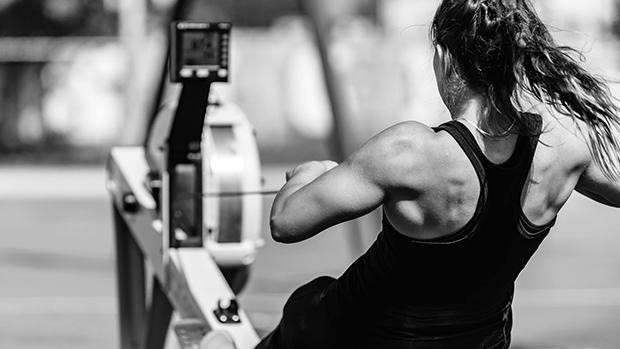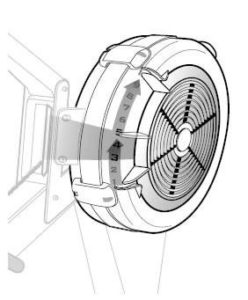Row, Row, Row Your Ergometer

By Coral Lewis, BSc., MPT, CAFCI
Looking for a full body workout? Look no further! With a few helpful technique tips for injury prevention, the rowing Ergometer (a.k.a the ERG) can be a great addition to your gym workout. The ERG can challenge your body in new ways while providing a great cardiovascular workout and working all major muscle groups.
Outside of the rowing and crossfit communities, I feel the ERG is underutilized as it can be intimidating if you are new to it. I often see these machines collecting dust in the corner of gyms while there are line ups for the treadmills, bikes and ellipticals. In this brief article, I hope to shed some light on correct ERG technique and how to avoid injury. So let’s find an ERG, dust it off and start rowing – I think you will like it!
TECHNIQUE
Although rowing on the ERG is a fairly low risk activity, you can develop shoulder and back pain if your technique is poor. By implementing these 4 basic steps you can ensure you are making the most of your rowing workout while avoiding injury.
Catch
|
Drive
|
Finish
|
Recovery
|
MISTAKES:
RESISTANCE One of the first mistakes we make on the ERG is forgetting to adjust the resistance to match the desired intensity. You can modify the intensity by adjusting the damper setting (1 easiest – 10 hardest) which is a lever on the side of the air-resistant fly wheel. I recommend starting between a 3 and 5 while starting out – this decreases stress to the lumbar spine and mimics more closely the resistance experienced while rowing on water.
IT’S MOSTLY ARMS, RIGHT? WRONG!
One of the first things I see with novice rowers is over utilizing arm strength while missing out on the power that can be generated through the legs and core. The % of power generated by the different body segments during ERG use is as follows:
- Legs (37%)
- Trunk (41%)
- Arms (22%)
It is a common mistake to engage the arms and legs at the same time early in the stroke, but this is inefficient and can lead to injury to the shoulders and upper body.
RUSH RUSH RUSH
When on the ERG racing the clock it’s easy to lose track of the natural recovery period that is built into the rowing stroke. On the ERG, when the recovery is rushed, it often results in the seat slamming into the foot plate which can be jarring and unnecessary. We pay so much attention on the “drive” phase we forget the importance of the “recovery” phase. When pacing your stroke the recovery should be twice as long as the drive with a ratio of 2:1.
SLUMPED POSTURE
We get enough of this in our day to day life, the last thing we need is incorporating it into our workouts as well! Rowing in a hunched posture puts the core at a disadvantage and places excess stress on the lumbar spine and pelvis. While rowing you should maintain an upright posture with good core engagement throughout the stroke. This will prevent your bottom from shooting out as you push down with your legs and thus protect your spine from repetitive high load forces.
If you are interested in adding rowing into your workout but are unable to follow these technique guidelines due to stiffness or pain, drop by Stride Physio and we can assist you in preparing your body for this activity.
REFERENCES
- Hart, Angela. Rowing Technique: Passing the Human Polygraph. CrossFit Journal, 50(1), 2006. 1-2.
- Martin, Joel & St. Andrews, Bryan. A biomechanical Analysis of Rowing. CrossFit Journal, 2012. 1-7.
- Rumball, Jane et al. Rowing Injuries. Sports Med, 35(6), 2005. 537-555.
- Prendergast, Katie. “T Nation.” T Nation, 2017, Image from: https://www.t-nation.com/training/tip-get-ripped-on-the-rower. (Cover Photo)


